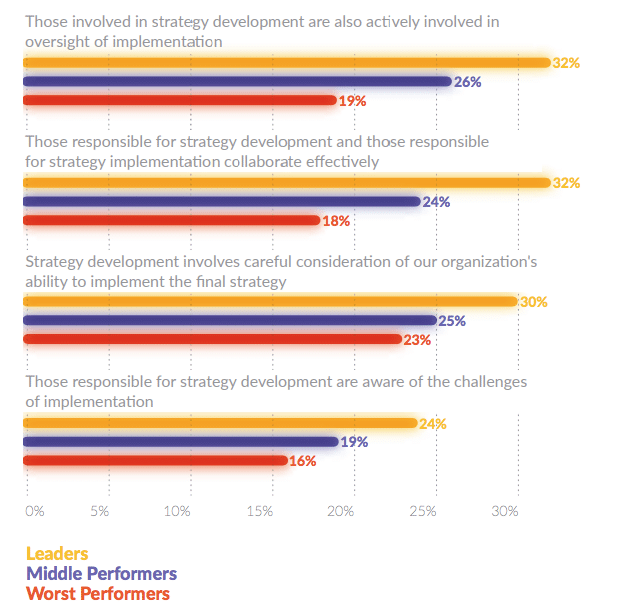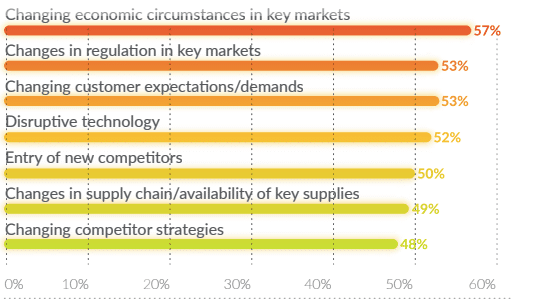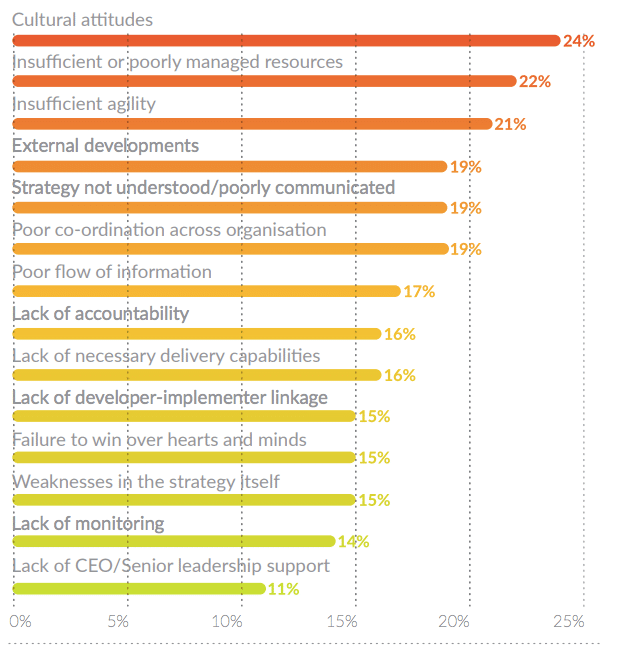Most companies struggle to bridge the gap between strategy development and its day-to-day implementation, according to new research from the Economist Intelligence Unit (EIU), which reveals that, on average, companies fail to meet 20 percent of their strategic objectives because of poor implementation.
“A strategy might look good on a PowerPoint slide, but it is only as good as its execution,” said Peter Toth, global head of strategy at Rio Tinto, a UK-headquartered global mining company and a report interviewee, in a news release. “That’s where the rubber hits the road.”
The new study from EIU, commissioned by the Brightline Initiative, identifies a small cadre of companies—classified as Leaders—that report faring best at achieving their strategic objectives.
“The C-suite frequently sees strategy implementation as a separate activity, a putting in place of changes ordered from above,” said EIU’s Gilda Stahl, editor of the report, in the release. “This leads to nothing but pain. Leaders need to be engaged in strategy delivery because it is inextricably linked to strategy design. The two must co-evolve.”
For your last major strategic change, to what extent did the following impede implementation? (Proportion answering completely or a great deal):
Some best practices of this elite group include the following:
Getting intelligence to those who can do something about it
More than half of Leaders say their organization provides effective feedback to allow those implementing strategy to take into account information from the evolving competitor landscape (compared with 35 percent of other respondents). Fifty percent of Leaders say they collect and effectively distribute information on changing customer needs (against 34 percent from others).
Balancing responsiveness and long-term vision
Leaders move quickly to adjust strategy and implementation to exploit changing opportunities and risks. At the same time, they keep an end-goal in sight, to avoid being knocked off track by overreacting to short-term developments.
Viewing strategy design and delivery as a continuum
At Leaders, interaction between those implementing strategy and those responsible for designing it leads to an ongoing evolution of the strategy itself as well as to program delivery approaches that are most effective for putting it into practice.
Leading barriers to successful strategy implementation:
A total of 500 senior executives participated in the survey, conducted in June and July 2017. Respondents all work for large companies: 48% have annual global revenues of $1 billion to $5 billion; 39% of $5 billion to $10 billion; and the remaining 13% of more than $10 billion. The survey sample is also senior, with half C-level or above and the other half comprising Senior and Executive VPs, Directors, and Heads of Business Units and Departments. Companies surveyed also have a wide geographic spread, with 30% each from North America, Europe and Asia-Pacific and the remainder from the rest of the world. Finally, respondents come from a wide range of industries, with IT (10%), financial services (9%), and manufacturing (8%) the most commonly represented.






